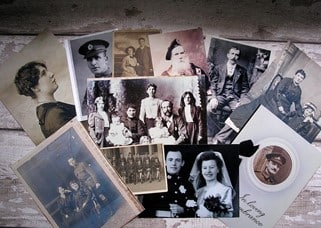The Role of Emotional Storytelling in Nonfiction Ghostwriting
November 18, 2024
In nonfiction ghostwriting, emotional storytelling transforms facts and reality into relatable stories. Nonfiction, perhaps more than any other genre, seems tied to presenting facts impartially. This can lead people to think that ghostwriting nonfiction is simply a matter of organizing facts into a cohesive narrative, but this isn’t the case. A good ghostwriter will draw out the nuances of emotion and reflection that underlie every story, adding emotional depth to nonfiction that can make or break its overall effectiveness.
Beth Kephart, author of Handling the Truth: On the Writing of Memoir, said it best: “Memoir isn’t a shouting match. It’s not a confession. It’s a prayer offered up, a truth forged in the crucible of memory, and it belongs to all of us, though only one of us gets to say it.”
Narrative is a powerful tool for drawing readers in, but more importantly, the emotional effect of a story helps convey the message at the heart of what a client has to say—whether it’s an experience they’ve had, an area of expertise they hold, a course they’ve designed, or a life they’ve lived. In this blog, we’ll discuss some of the techniques that ghostwriters use in nonfiction storytelling, adding narrative effect to factual information, and making dry topics shine.
Understanding Emotional Storytelling in Nonfiction
While nonfiction writing may be rooted in factual investigation and accuracy, it’s emotional nonfiction storytelling that allows facts to become stories readers care about and remember.
Without an emotional layer, a nonfiction work can read like a dry recounting of facts and events, rather than a story that pulls readers in.

When done well, emotional storytelling draws readers in and involves them in the human experience, the people, the experiences, and the insights in the work.
This sense of inclusion grounds and personalizes nonfiction, allowing readers to see themselves reflected in it.
Emotionally rich nonfiction storytelling is less about providing dramatic embellishment and more about making the truth of a story felt.
The stories readers engage with most are those in which they have access to the emotions and inner experiences that preceded, accompanied, or resulted from the events described.
For example, a single fact—such as a client’s career milestone—takes on meaning and power when the ghostwriter allows the reader to feel the anticipation, doubt, or joy that preceded it. The reader is transported into the experience of the client, not just understanding what happened, but why it mattered and how it felt. These powerful emotional layers enable the reader to step into the story, to identify with the real-life struggle, success, or transformation that led to the story being told.
Ghostwriters, who are often hired to shape a client’s story or expertise in a compelling way, play a unique role in creating these emotional connections. Ghostwriters aren’t just communicating the facts of their clients’ lives or lessons, they’re also trying to capture the emotional connections, insights, and reflections that bring those facts to life. In nonfiction storytelling, it’s common for a writer to spend time interviewing the client to help them uncover the emotions behind each experience, as well as the moments that are ripe for further exploration or that can best reflect the client’s feelings or insights.
For example, a ghostwriter might ask: What makes this particular experience important or compelling? Why was it particularly difficult? Why was it particularly rewarding? Why did it mean so much to you? What did you learn from it? And how did you feel during it, afterward, and in the process of writing about it? Even the questions that ghostwriters ask can help uncover universal themes—such as resilience, fear, hope, and growth—because these types of questions draw out significant emotional connections.
Ghostwriters achieve this by staying true to their clients and to the facts, using description to set the scene and focusing on character to humanize the client’s story. They use pacing to represent the ups and downs of real life. The goal, once again, is to create an emotional connection with readers who may be able to place themselves in the client’s shoes, even while respecting the truth of the nonfiction.
Key Narrative Techniques in Nonfiction Ghostwriting
Ghostwriters rely on numerous narrative techniques beyond reporting to turn facts into compelling stories. These devices help make nonfiction resonant in ways that do more than merely recount events. They help transform bare facts into powerful stories that are immersive, relatable, and memorable.
Crafting Relatable Characters
Characters drive stories, and nonfiction writers need to create believable, complex characters as much as novelists do.

When hiring a ghostwriter to bring your story to life, you’re looking for someone who can do more than recount events—you need someone who can capture the full depth of your experiences.
A skilled ghostwriter doesn’t just show what you achieved, overcame, or even failed at; they reveal what was happening inside you, what challenges you faced, and how those moments shaped you.
To make your story truly resonate, a ghostwriter turns you and the real-life figures in your life into multi-dimensional “characters” whom readers can connect with and care about.
In this way, your memoir becomes more than a record of events; it becomes a deeply relatable narrative that invites readers into your journey.
Using Descriptive Detail to Enhance Emotion
Descriptive details are the sensory ingredients of a scene that make it live and breathe. Ghostwriters use the sights, sounds, smells, and textures of the setting to place the reader in the moment.
Descriptions of a childhood home, the texture of a loved object, or the atmosphere of a place where a big moment occurs, are the emotional centers that root the reader in the scene.
For example, instead of simply saying, “The client’s childhood home was small,” a ghostwriter might write, “The wooden floors creaked, the smell of fresh bread lingered in the kitchen, and an old radio in the corner played jazz.” Sensory details bring back nostalgic memories and let readers feel what the protagonist is feeling in the moment. They provide emotional triggers for the reader, bringing them into the moment more meaningfully.
Building Tension and Pacing
In nonfiction storytelling, maintaining suspense is crucial to keeping pace and rhythm. Ghostwriters use pacing to emulate the emotional contours of real life, balancing high-action scenes with quieter moments of reflection, or building to a powerful denouement. The cumulative effect is a natural rhythm that keeps the reader’s attention and emphasizes the major events.
Weaving in Reflection and Personal Insight
The act of reflection, adding emotional dimension to nonfiction, allows ghostwriters to insert their client’s “voice” even when writing in third person, enriching the book’s content beyond just “what happened” to “why did it matter?”

This layer turns the story from a recounting of events into a chronicle of the client’s thinking, stumbling, and growth.
Ghostwriters combine characters who are familiar to us, sensory details, tension, pacing, and introspection to provide nonfiction with narrative depth.
These elements deliver feelings and meaning that cannot be provided by facts alone. They draw readers into the story, allowing them to feel, know, and remember it.
How Emotional Storytelling Conveys Powerful Messages
Many nonfiction books aim to deliver a message or insight to readers—about living a better life, overcoming obstacles, or understanding the world around us.
What’s the best way to deliver those messages? There’s no one simple answer, but emotionally charged narratives often work best.
Whether ghostwritten or not, a story is a powerful tool for embedding even the driest ideas into our memories. If we think of our stories as a way to drive home core messages, the reader is more likely to remember those messages long after they’ve put the book down.
Making Facts Memorable Through Emotion
It’s easier to remember facts that are charged with emotion, and easier to remember events if they come with a story of feelings.

Ghostwriting exploits this by connecting the objective information with the client’s emotional reactions to the information, enriching the text with the emotional tone of the experience.
For example, if a client has achieved a career milestone, the ghostwriter might recount the accomplishment.
However, the real draw of the story is the client’s emotional response: pride, relief, or excitement.
Creating Empathy and Understanding
Nonfiction that touches the heart can inspire empathy, enabling readers to grasp—even if they’ve never had anything resembling the experience—what the client was feeling.
When ghostwriters share the emotional vulnerability or resilience behind real events, readers can relate to the feelings behind those events, even if the circumstances aren’t similar to their own. An empathetic connection to the client’s experience deepens the reader’s engagement with the story and the power of the client’s message.
Inspiring Action or Change
By leading readers to identify personally with the impact of a broader issue, problem, or achievement, the ghostwriter connects readers to the message of the story. This can move them to action, to a different way of looking at things, or to inspiration.
The power of a personal story of transformation or persistence, for example, helps readers reflect on their own lives or make a change, making the message of the book as relevant to the reader as it is to its subject.
With enough emotional detail, nonfiction becomes more than just a story of what happened—it becomes a lived experience, something that sticks with readers, something to take with them.
Challenges and Considerations in Emotional Storytelling
While emotional storytelling adds value to nonfiction, it also creates new challenges for ghostwriters.
Their job is to find the perfect balance between emotional truth and factual truth, respecting both the story and the reader. Here are three ways they achieve this:

1. Balancing Truth with Narrative Techniques
In nonfiction, the ghostwriter’s primary responsibility is accuracy—even when using narrative devices that deepen emotion. Deepening emotional truth shouldn’t distort the facts or turn events into something they’re not. Ghostwriters must stay grounded in factual reality, using storytelling tools to lift the narrative without lifting it too far off the ground.
2. Sticking to True Emotions
Emotional impact in nonfiction is important, but it mustn’t be exaggerated for effect. The ghostwriter’s ethical responsibility is to ensure that emotional storytelling feels true to the author and is respectful of them. They want the story’s emotional truth to emerge naturally, not to manipulate the reader into feeling a certain way.
3. Preserving the Client’s Authentic Voice
The ghostwriter must capture not only the facts of the client’s story but also their voice, worldview, and values. If the story becomes overly emotional, it risks drowning out the individual’s voice.
Ghostwriters must work with the client to ensure the tone feels true to the client’s style of speaking and seeing the world. In this way, the emotion remains authentic to the individual.
The trick in emotional nonfiction is to maintain a balance between narrative technique, ethics, and truth. Ghostwriters walk a tightrope, but the best can craft stories that resonate without sacrificing truth.
The Impact of Emotional Storytelling in Nonfiction Ghostwriting
Nonfiction told through the lens of emotional storytelling stirs something deeper in readers, taking them beyond the recitation of facts to the heart of the matter.
A skilled ghostwriter who deftly employs narrative tools—character, sensory detail, pacing—can transform a series of facts into an indelible experience. Nonfiction crafted as an emotional journey earns the reader’s attention and investment, inviting them to empathize, learn, and perhaps evolve through the client’s story.
Ghostwriters strike a delicate balance of authenticity, emotion, and ethical storytelling that speaks to the core of their clients’ messages and helps them reach a wider audience. For anyone who wants to create nonfiction that informs as well as inspires, emotional storytelling serves as a bridge that connects meaning, impact, and relatability to the written word.






























